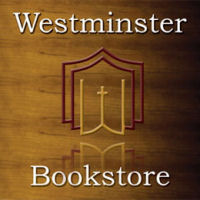Bonhoeffer’s foundation for the Christian life is the cross (26). Nichols begins with Bonhoeffer’s christology, followed by his ecclesiology, both of which, as many have noted before, loom very large in Bonhoeffer’s theology. Under this heading is Nichols’ chapter on Bonhoeffer’s view of community. This may have been my favorite chapter, where Nichols summarizes Bonhoeffer’s insistence that the church must come to grips with her own weaknesses and the weaknesses of her members. If Christians could permit themselves to be appropriately disillusioned, this communal realism could go a long way to helping the church. I found myself overjoyed in reading this chapter. It is filled with needed correctives, in my opinion.
Nichols goes on to summarize Bonhoeffer’s three essential disciplines of the Christian life as “reading and obeying Scripture, prayer, and the practice of theology” (26). In discussing these three essentials of Bonhoeffer’s, Nichols spends time discussing his doctrine of Scripture in chapter 4. Nichols rightly identifies his doctrine of Scripture as a linchpin issue in the debate over Bonhoeffer’s questionable status as a conservative. Offering an important caution, that “We need to be careful in these debates over who gets to claim whom, so that we so not do injustice to these figures in their own contexts,” (80-81) Nichols nevertheless concludes that “Bonhoeffer should not be counted among theological liberals. He was a theological conservative” (81). He goes further, claiming that Bonhoeffer is an evangelical, measured by the Bebbington four (82). There are certainly remnants of neo-orthodox elements in Bonhoeffer’s theology, but I think that Nichols is right. Based on everything I’ve read from Bonhoeffer (4 books, 2 biographies, and a collection of essays by him) I agree with his conclusion.
His chapter on prayer (chapter 5) contains some interesting nuggets that are worth chewing on, particularly in his insistence that seminary students should be force to pray and taught to pray. Bonhoeffer also saw an important relationship between how we read Scripture and how we pray, and the two ought to go together. Nichols later says and then quotes Bonhoeffer: “If we do not have a Scripture-saturated approach to our praying, we risk becoming ‘victims of our own emptiness’” (108). A Scripture-less person’s prayers will be filled with himself, and a prayer less person’s Scripture readings will be nothing more than intellectual exercises.
Nichols then discusses (in chapter 6) Bonhoeffer’s third essential, asking the question of how the Christian is to “think theologically and then live theologically” (27). Bonhoeffer encouraged his students and readers to not pit theology against the Christian life, but to integrate the two.
Practicing the three above spiritual disciplines would never lead, in Bonhoeffer’s way of thinking, to an isolated or monastic existence. Instead, theology works its way out into community. While it is popular today in theological circles to emphasize community, Bonhoeffer offers some helpful and sound counsel that Christians would do well to heed, whether they think the contemporary emphasis on community is simply a fad or is here to stay.
Nichols, in summarizing Bonhoeffer’s “worldly Christianity,” (chapter 7) is careful to bring out what Bonhoeffer really means when he uses that phrase. Nichols summarizes Bonhoeffer by saying that Christians should be neither monastics, nor “cultural Protestants.” Instead, Christianity must ask something of its adherents. It must challenge churchgoers in deeply personal and costly ways, while at the same time insisting that they not cease their callings or jobs.
Nichols discusses Bonhoeffer’s view of freedom (ch. 8) “disguised as service and sacrifice” (27). Anyone who has read his book The Cost of Discipleship (which he later came to regard as too legalistic) knows that Bonhoeffer is adamant in his insistence that the Christian life is one that requires self-denial and sacrifice. For Bonhoeffer, however, love (ch. 9) is the thing that “accents” all of the above disciplines and expressions of faith lived out.
 What makes Nichols’ book great is his willingness to let Bonhoeffer’s own ideas breathe. Reading Bonhoeffer can be maddening sometimes because he lived in such intense and formative times. The atmosphere of all his writings and sermons is thick with ominous threat both politically and to the Church. Knowing his biography first often brings some needed context - something that not all readers can have the luxury of exploring. Nichols does a nice job of pulling out the disparate elements, though, and giving the reader a nicely formed whole. I very gladly place it on my shelf along with my collection of other Bonhoeffer books, and I think that I will find myself turning it to it often.
What makes Nichols’ book great is his willingness to let Bonhoeffer’s own ideas breathe. Reading Bonhoeffer can be maddening sometimes because he lived in such intense and formative times. The atmosphere of all his writings and sermons is thick with ominous threat both politically and to the Church. Knowing his biography first often brings some needed context - something that not all readers can have the luxury of exploring. Nichols does a nice job of pulling out the disparate elements, though, and giving the reader a nicely formed whole. I very gladly place it on my shelf along with my collection of other Bonhoeffer books, and I think that I will find myself turning it to it often.











